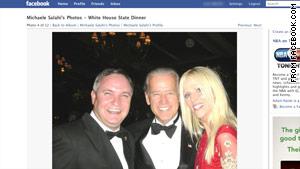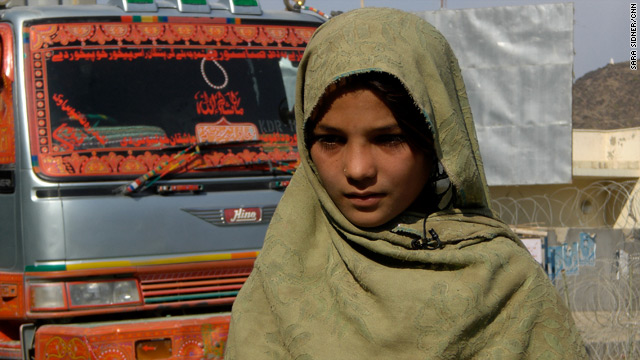A new way of looking at the world
(CNN) -- What's the first thing that goes through your mind when someone says the word "data"?
For many of us, the first image is line graphs, pie charts and spreadsheets with columns and rows full of numbers that leave you bleary-eyed and a bit dazed.
But what if someone were to say data can also mean what you post on Facebook and Twitter, the ratings you gave a restaurant, the photos you uploaded to Flickr or even, perhaps, what you feel.
A bit of a reach? Not anymore.
An emerging set of tools is making it easier than ever to track and compile all sorts of "data" and display it in a way that's relatively easy to understand.
You can now point your mobile phone at a street and instantly get ratings for restaurants. Or type in your address and find reports of crimes that may have occurred in your neighborhood. It's even possible to track emotions on a national and global scale.
"Specialists from scientists to accountants have been dealing with data for decades," said Martin Wattenberg, a researcher at IBM's Center for Social Software. "What's new is that there's a whole lot more data of relevance to consumers.
"At the same time, people are generating a whole lot of data themselves."
There are several reasons why we're seeing more data visualization in popular culture and why it's becoming simpler and more innovative, experts say.
Computers and software have gotten cheaper during the past few decades, and the technology needed to build applications is now in the hands of more people.
Meanwhile, more data are becoming digital, making it easier to parse and catalog. "You have stuff available on government sites that would have only been available on paper a decade ago," Wattenberg said.
Finally, through the advent of social media applications like Facebook and Twitter, coupled with the rise of increasingly sophisticated mobile phones, a cultural shift is seemingly under way.
"People are sort of happily defining their own social networks for other people to see, and that has led people to become interested in exploring data in ways they weren't interested before," Wattenberg said.
Bruce Mau, a designer and author of several books on the subject, called the confluence of the technical and cultural changes nothing short of a "social revolution."
"We're putting tools into the hands of millions of people," he said. "More importantly, we're connecting those people."
From Darwin to health care legislation
Ben Fry's resume is a bit intimidating. He received his doctoral degree from the MIT Media Laboratory and has worked on developing visualization tools for genetic data. His Web site contains phrases like "bifurcation tool" and "microarray data."
But the work he and his peers are doing holds the possibility of clarifying difficult data. Take, for example, his project regarding Charles Darwin and the six editions of his famous book, "On the Origin of Species."
Through a visualization of carefully transcribed text from the different editions, he traced how Darwin's theory and ideas developed during his lifetime. The visualization challenges the notion that "scientific ideas ... are fixed notions," Fry wrote.
For example, Fry writes, "The phrase 'survival of the fittest' -- usually considered central to the theory and often attributed to Darwin -- instead came from British philosopher Herbert Spencer, and didn't appear until the fifth edition of the text."
The visualization project wouldn't have been possible if the text weren't digital. That progression -- of historic text becoming digital via projects like Google's scanning of books and people creating digital text every day -- is creating new possibilities.
"As we get away from the number stuff, it brings us closer to something that's a little more human," Fry said.
Consider the current debate about health care reform legislation, said Fernanda Viegas, also a researcher at IBM's Center for Social Software. She and Martin Wattenberg created Many Eyes, a social media Web site that focuses on data visualization.
The U.S. House has a bill. The Senate has several bills floating around. Many lawmakers have plenty of ideas on what kind of policies will work and what won't, and there are a range of numbers and statistics associated with each.
The challenge for media and designers is to "visualize those hundreds of pages of legislation, the kinds of changes people want to make, the different amendments and the different drafts," so that people can more easily understand the debate, Viegas said.
Referring to the launch of Web sites like data.gov and recovery.gov that are making heaps of data about the federal government available to anyone who wants to use it, Mau said data visualization could also help make government more transparent.
Read about the U.S. government's online "app store"
Such projects are taking root. The Dutch company Layar recently launched a smartphone application that tracks money from the nearly $800 billion Recovery Act that President Obama signed this year. It combines views of the real world with contract data provided by recovery.gov.
You, your neighborhood, your city
Meanwhile, Adrian Holovaty, a pioneer in combining data with maps, is much more occupied these days with neighborhoods, city blocks and ZIP codes.
His latest project, EveryBlock.com, provides a torrent of information culled from public databases, media sites and social media like Flickr for more than a dozen cities. It was recently acquired by MSNBC.com.
"The idea came about when I was living in Chicago and being in a very dense, thriving neighborhood and coming to the realization that there was no way of finding out everything that was happening," he said.
"That's what we set out to do: create an activity stream for your neighborhood."
Users go to the site, click on a city and filter the available information by typing in an address, ZIP code or neighborhood.
Read more about how the future of online news may be "hyperlocal"
Depending on the data currently available for the area, users get everything from restaurant ratings and business reviews to crime data, real estate listings and Flickr photos of nearby residents.
Such local data is becoming increasingly available on mobile phones as well. Yelp's Monocle feature for the iPhone 3GS shows business ratings by simply having the user hold up their phone to the street.
Citysense, developed by Sense Networks, goes one step further. Currently available only in San Francisco, California, the mobile phone application captures signals transmitted by cell phones and and builds a "heat map" showing densities of people. The company has partnerships with several carriers, and the information is aggregated via GPS signals and cell phone tower transmissions.
Tony Jebara, Sense Networks' chief scientist, said the company wants to make the application more sophisticated by segmenting the heat map along social lines. For example, in the future, college students will be able to search a city for fellow students.
Read more about how phone apps are seeking to "augment reality"
Nathan Yau, a graduate student at the University of California-Los Angeles, has an even more specific focus: the individual. He founded a Web site, Your Flowing Data, that helps people chart their lives using Twitter.
Using a Twitter account, you send a message to Flowing Data, and over time, you can visualize your choices, habits and behaviors. Essentially, Yau said, the project uses data as a personal narrative. "You're using visualization to show important parts of your life," he said.
Wattenberg says the new data visualization tools can help draw connections from the private narratives to the way the world behaves. "Personal data can be aggregated to form a global self-portrait," he said.
For instance, Facebook unveiled a "gross national happiness" index for the United States using users' status updates. Using two years worth of data, Facebook rated "positive" and "negative" words among American users' updates to come up with the measure.
The index said some of the happiest days for Americans during that period were holidays like Thanksgiving and July Fourth. Two of the unhappiest were the days Heath Ledger and Michael Jackson died.
"There's a nice of scaling that happens when you can zoom up from the personal level up to the level of looking at the globe as a single thing," Wattenberg said. "It's very powerful."








.jpg)







